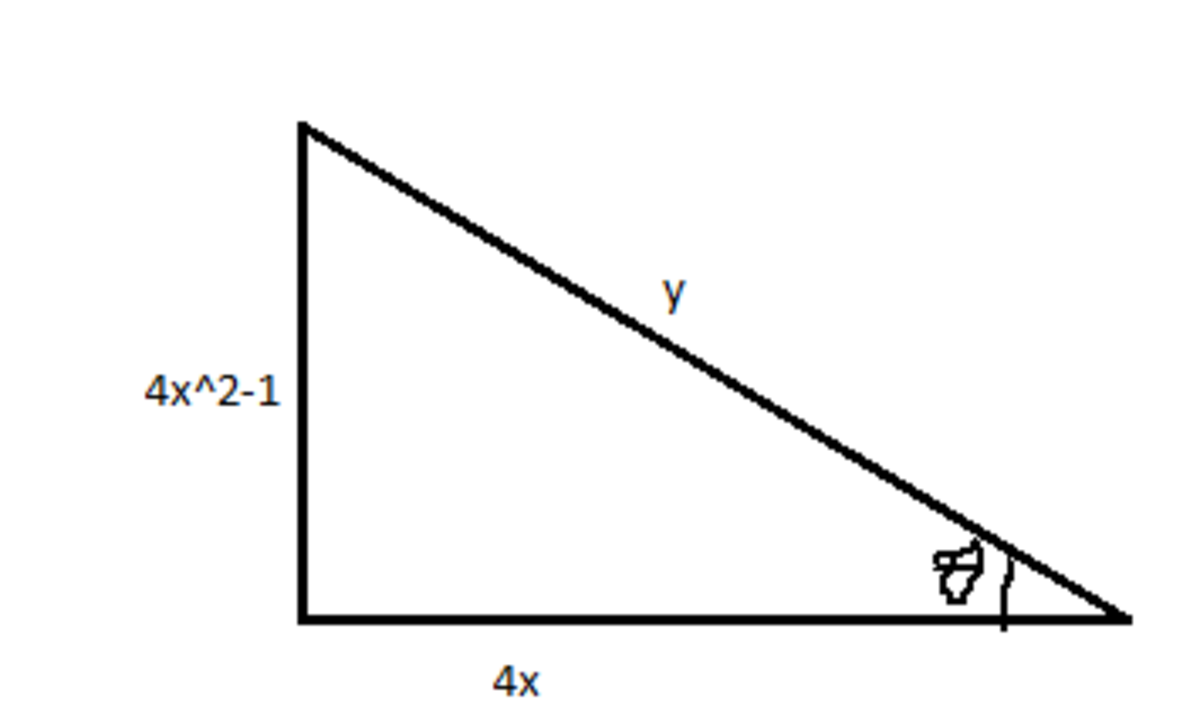I think u know elementry trigo
If tan θ = x − 4 x 1 for x = 0 , express sec θ − tan θ in terms of x .
This section requires Javascript.
You are seeing this because something didn't load right. We suggest you, (a) try
refreshing the page, (b) enabling javascript if it is disabled on your browser and,
finally, (c)
loading the
non-javascript version of this page
. We're sorry about the hassle.
2 solutions
First we'll combine into one fraction.
t a n θ = 4 x 4 x 2 − 1
t a n θ = a d j a c e n t o p p o s i t e

We use the above triangle and the Pythagorean Theorem to solve for y.
( 4 x 2 − 1 ) 2 + ( 4 x ) 2 = y 2
1 6 x 4 + 8 x 2 + 1 = y 2
( 4 x 2 + 1 ) 2 = y 2
y = ± ( 4 x 2 + 1 )
We know s e c θ = a d j a c e n t h y p o t e n u s e
s e c θ = 4 x y = 4 x ± ( 4 x 2 + 1 )
Thus (plus version),
s e c θ − tan θ = 4 x 4 x 2 + 1 − 4 x 4 x 2 − 1 = 2 x 1
OR (minus version)
s e c θ − tan θ = 4 x − ( 4 x 2 + 1 ) − 4 x 4 x 2 − 1 = − 2 x
nice solution
tan θ = x − 4 x 1 1 + tan 2 θ = sec 2 θ ⇒ 1 + ( x − 4 x 1 ) 2 = sec 2 θ ⇒ 1 + x 2 − 2 1 + 1 6 x 2 1 = sec 2 θ ⇒ x 2 + 2 1 + 1 6 x 2 1 = sec 2 θ ⇒ ( x + 4 x 1 ) 2 = sec 2 θ ⇒ sec θ = ± ( x + 4 x 1 ) 1 ) sec θ − tan θ = ( x + 4 x 1 ) − ( x − 4 x 1 ) = 2 x 1 2 ) sec θ − tan θ = − ( x + 4 x 1 ) − ( x − 4 x 1 ) = − 2 x □